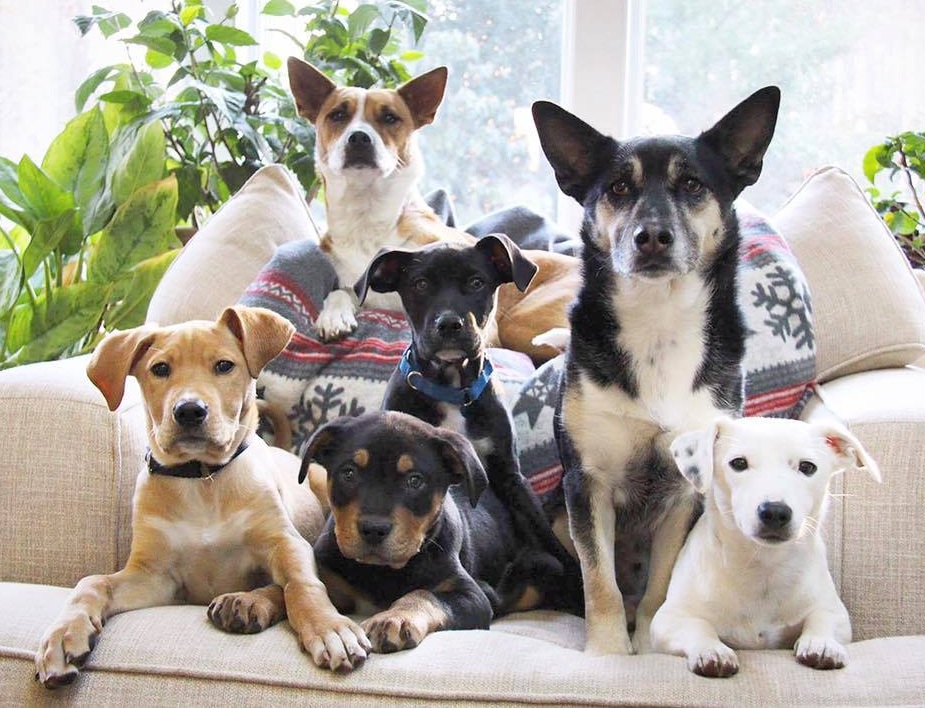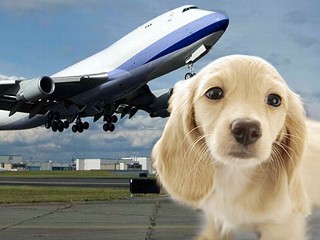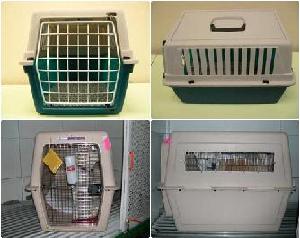-
Moving Tips: Avoid Unexpected Moving Costs
Whether you are up sizing, downsizing, or just moving locations, these hidden costs can ....
Read More -
Moving Tips: Moving Terminology
The moving world has its own lingo and when preparing for a move it is important to ....
Read More -
Moving Tips: Making The Best of Your Moving Day
ever try to pack things on the day of your move, unless there is just a few items need ....
Read More -
Moving Tips: Moving Guide Calendar and Checklist
Bekins moving checklist and advice: Tips for a less stressful move. An organized move ....
Read More -
Moving Tips: How To Save Money On Your Move
Ways to save your moving cost: Save Money On Your Move Moving is expensive and there ....
Read More -
Moving Tips: Harzardous and Non-Transporable Items
While Bekins is a full service mover, there are things that are not legal for us to ....
Read More -
Moving Tips: Moving Expenses and Relocation Benefits
Many people don't realize that they can claim some moving related expenses. To do job ....
Read More -
Moving Tips: Move Jewelry and Other Valuables
We recommend that you carry irreplaceable or expensive items with you. Jewellery, ....
Read More -
Moving Tips: How To Move Your House Plants
If you're moving and wouldn't dream of leaving your favorite house plants behind ....
Read More -
Moving Tips: How to Select a Mover
Choose your mover by reputation, resources and stability. Ask your mover for ....
Read More -
Moving Tips: How to Move Your Pets
If you are a pet owner, moving to a new home also means relocation for Fido, ....
Read More -
Moving Tips: Specific Packing Tips
Bekins Moving & Storage has a complete range of cartons and material specially ....
Read More -
Moving Tips: Move Pre-planning
Proper packing is essential for a successful move. That's why many families entrust ....
Read More
Blog - How to Move Your Pets

If you are a pet owner, moving to a new home also means relocation for Fido, Tabby, and possibly a menagerie of birds, gerbils and tropical fish or even your favorite boa constrictor. Household goods carriers are not in a position to transport pets in moving vans, but, as another step in our continuing program to make moving better for the entire family, would like to present the following information on how to move your pet(s).
The most common methods of transporting pets are by automobile or airplane. Due to new, more stringent regulations, some railways have discontinued carrying pets on board. Most bus lines do not carry pets but we suggest you check bus and rail service in your area just to be sure. There are companies that specialize in moving pets which you might wish to contact. You know your pet better than anyone else so, depending upon the individual animal, the time element and other contributing factors, you can determine the safest and best way for your pet to move to your new home. Whatever mode of transportation you choose, visit the veterinarian first to have your pet pronounced fit for travel. If the animal by nature is high strung or susceptible to motion sickness, the veterinarian may prescribe medication.
Airlines
Airlines, which offer safe, speedy transportation,
will carry most species of animals and offer guidelines for shipping. Discuss all aspects of your pet's shipment
with the airline well in advance of your planned move. Airlines do regulate the shipping of four-legged pets based
on temperature control, and these carrier restrictions vary. For example, one airline will not accept a pet for
shipment if the temperature is below 32 degrees or above 80 degrees, taking into consideration both the origin
and destination. If possible, you will want to book a weekday flight during slack periods when there is more
room in the plane's cargo compartment and airline personnel have more free time to assist. Make your reservation
at least four days early and select a flight schedule that has the least number of transfers and a minimal amount
of confinement.
which offer safe, speedy transportation,
will carry most species of animals and offer guidelines for shipping. Discuss all aspects of your pet's shipment
with the airline well in advance of your planned move. Airlines do regulate the shipping of four-legged pets based
on temperature control, and these carrier restrictions vary. For example, one airline will not accept a pet for
shipment if the temperature is below 32 degrees or above 80 degrees, taking into consideration both the origin
and destination. If possible, you will want to book a weekday flight during slack periods when there is more
room in the plane's cargo compartment and airline personnel have more free time to assist. Make your reservation
at least four days early and select a flight schedule that has the least number of transfers and a minimal amount
of confinement.
Health Certificate, Etc.
A health certificate and rabies inoculation are required in many provinces and states. Ask your veterinarian or the Department of Agriculture (U.S.) about requirements in the province or state to which you are moving. For instance, Hawaii Requires a 120-day quarantine, at the pet owner's expense. If you ship your pet by air, two copies of a health certificate will be required on all warm-blooded animals and on birds. The health certificate must be signed by a licensed veterinarian and cannot be more than ten days old. Some airlines also require a rabies record accompany the health certificate.
Containers
 Selecting the proper container for transporting your pet by air is important. For dogs, cats and other four-legged
pets, the container should be very sturdy with good locks and open ventilation. The bottom must be leak-proof and
lined with highly absorbent material.
Selecting the proper container for transporting your pet by air is important. For dogs, cats and other four-legged
pets, the container should be very sturdy with good locks and open ventilation. The bottom must be leak-proof and
lined with highly absorbent material.
The water and feeding dishes should be fastened securely in place and should allow for filling from the outside. Proper size is important so that the container does not restrict the animal's movement - there should be room for the animal to stand up, turn around or scratch. If you're shipping a dog, remove the leash. Don't leave it inside the kennel where the dog can get tangled in it. Replace the dog's collar with one that is flat and light weight. A flea/tick collar is recommended.
Be sure to attach an identification tag - a good idea for your cat, too. The airlines sell containers for four-legged pets that meet all the requirements for safe handling. Due to health requirements to prevent the spread of disease, containers cannot be rented. If you are shipping a bird, you will need to contact your local pet shop for a sturdy container. Some of the heavy duty cardboard containers are good and quite acceptable. Again proper ventilation is required. Shipping in a common bird cage or flimsy container would not be accepted by the airlines.
Shipping pet snakes will require a sturdy, escape-proof container. Wood construction is acceptable. Fish are shipped in plastic containers. Your pet shop or veterinarian can give you directions on acclimating your fish to the container and recommend feeding instructions. Attach a label to the top of the container listing the animal's name, the address of your new home, or the animal's destination, a phone number where you can be reached and any special handling instructions. Attach another label that says "Live Animal."
Moving Day
Attitude is a most important factor in determining the ultimate success of a move and the emotional adjustment to a new environment - this is true for the entire family, including pets. Many pets are closely attuned to the emotions of their owners. Be positive. If possible, allow your pet to get used to the container before the trip. Using it as a bed or feeding the animal treats while the pet is in it are good positive approaches. Feed the pet the same meal it usually eats but no later than six to eight hours before departure, depending on how long the flight is and the layover time, if any.A change in the animal's diet, combined with a long flight, may tend to give the animal a nervous stomach and loose stools. Many airlines will not feed your pets while in transit so do not expect them to do so. Any pet will endure the trip fine anywhere in Canada or the U.S. without being fed en route. However, if you feel it is necessary, you can request feeding. A supply of dry food can be placed in a cloth bag and attached to the outside of the container so that attendants can reach it without being nipped or allowing the pet to escape.
Feeding instructions should be attached. For birds, seed can be placed in the containers. The attendants will water pets if requested. Arrive at the airport at least 45 minutes prior to departure. If you're shipping a dog or cat, exercise the animal before putting him in the kennel. For any type of pet, carry the crate to the boarding area, hand it to an airline employee and ask him to personally make sure the carrier gets on the aircraft not more than 30 minutes before take off.
When you arrive at your destination, pick up the animal immediately or ask an airline employee to pick him up and bring him to you. If you're going to take your pet in your automobile, here are a few helpful hints to make the road trip more enjoyable for both of you. A small kit filled with grooming aids, pans for food and water and your pet's favorite toy will be useful on the road. Take water along in a plastic jug and keep it cool. A change in water the first day can cause stomach upset in a dog or cat.
The same is true of a sudden change in diets, so take along a few packages of your pet's regular food. Stop frequently to exercise your pet, keeping him on a leash at all times when outside the car. Both dogs and cats should wear I.D. tags. Do not feed or give water to your dog or cat for about two hours prior to the trip, especially if your pet has a tendency to experience motion sickness. Accustom the animal to car travel, if it is not already, by taking them on short, frequent trips.
A dog should be taught to stay in one place in the car (not near the driver - this could be a hazard). A cat often rides better in a carrier. Don't allow your dog to put their head outside the window while the car is moving. Road dirt and wind friction could cause permanent eye damage. If you're going to stay in motels en route, make reservations in advance to be sure you can find lodgings that accept animals. Bring along the pet's bedding. Don't let the animal sleep on the motel's beds, chairs or bedspreads. If the animal must be left uncrated alone in a motel room, a "Do Not Disturb" sign should be placed on the door and the maid or front desk informed. If an accident occurs in the room, clean the spot with a diluted solution of white vinegar to mask the odor.
When you check out, spray the room with an air deodorizer. The next guest may not be used to pet odors. If you must leave the pet alone in the car, be sure to park in a shady spot and leave the windows open an inch or two on all sides. In the winter, park in a sunny spot. Return often and move the car as the angle of the sun's rays change.
trong>

